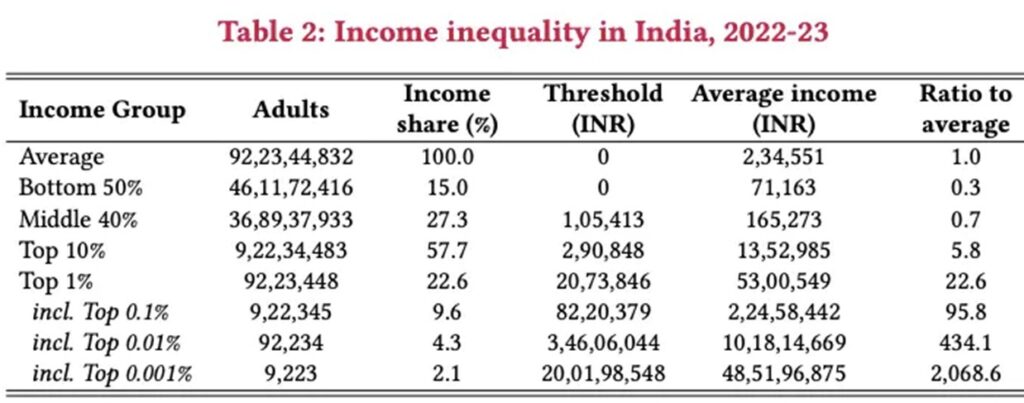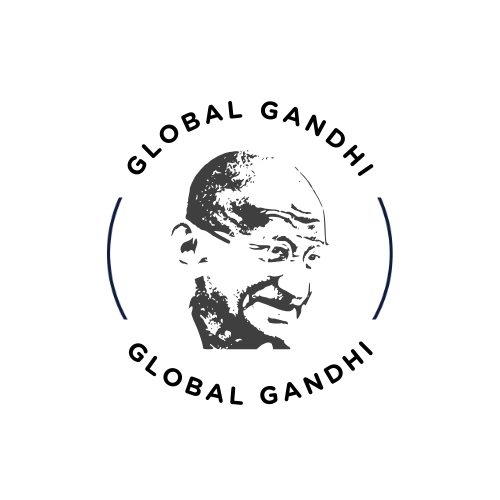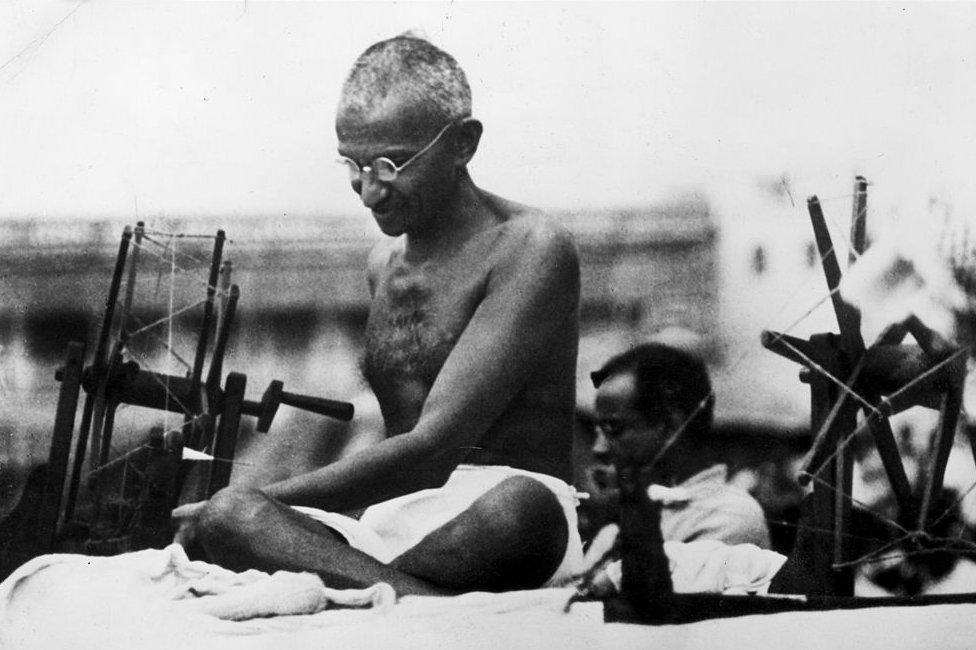A.ANNAMALAI
Director
National Gandhi Museum
Rajghat, New Delhi 110 002
Email.:nationalgandhimuseum@gmail.com
INTRODUCTION:
At the beginning of the 1990s, India, like many other countries, underwent a profound policy shift. This transition, commonly called the LPG model—representing Liberalization, Privatization, and Globalization—was designed to integrate the Indian economy into the global market, enabling it to connect, coordinate, and compete with rapidly developing and developed economies worldwide.
In 1991, India faced a severe balance of payments crisis, which compelled the country to deposit 47 tons of gold with the Bank of England and 20 tons with the Union Bank of Switzerland. To address this crisis and stabilize its economy, India engaged in negotiations with the International Monetary Fund (IMF). The IMF’s intervention led to a series of systematic economic reforms, including the liberalization of equity markets to attract overseas corporate investors, the promotion of Foreign Direct Investment (FDI), the reduction of import duties, and the reorganization of international investment regulations.
Globalization has woven a complex web of interconnectedness, whereby events and decisions made at great distances increasingly shape our lives. This process renders many of the traditional borders and boundaries between countries less relevant, highlighting the deep interdependencies in the global economic landscape.
BASIC ASSUMPTIONS:
Certain basic assumptions were propagated while entering into globalization and liberalization. It was believed that it would impact on the following:
- Employment Opportunities: Globalization can lead to increased job creation through the expansion of international trade and investment.
- Steady Growth of GDP: By opening up markets and encouraging investment, globalization can contribute to steady economic growth.
- Income Distribution and Growth: Theoretically, income should be distributed more broadly as economies grow due to globalization.
- Standard of Living: With economic growth, there is often an improvement in the standard of living. This can be seen in increased access to goods and services, better infrastructure, and improved healthcare and education.
- Poverty Reduction: By stimulating economic growth and creating jobs, globalization can potentially reduce poverty. As people gain employment and incomes rise, poverty rates can decrease.
- Globalization as a Panacea: Globalization can offer significant benefits and a powerful engine for economic development and social progress. It is considered as a cure-all for socio-economic issues of the Third World countries.
RESULT OF THREE DECADES OF GLOBALISATION:
Between 1990 and 2022, India experienced an annual income growth rate of approximately 3.6%, a period that was marked by a substantial increase in national wealth. During this time, the aggregate wealth-to-income ratio of India significantly escalated, rising from 3.83 in 1995 to 5.75 in 2022. This increase indicates a notable accumulation of wealth relative to national income.
A prominent facet of this wealth accumulation is the burgeoning number of high-net-worth individuals. According to Forbes billionaire rankings, the count of Indian individuals with a net worth exceeding USD 1 billion grew dramatically from a single individual in 1991 to 52 in 2011, and further to 162 by 2022.
Moreover, the proportion of these individuals’ total net wealth relative to India’s net national income experienced a remarkable surge. In 1991, their combined net wealth constituted less than 1% of the country’s net national income. By 2022, this share had escalated to approximately 25%. This trend underscores a significant concentration of wealth among the elite, reflecting broader shifts in wealth distribution and economic disparities within the country.
These observations suggest a dynamic interplay between income growth, wealth accumulation, and rising economic inequality, warranting further analysis to understand the implications for economic policy and social equity in India.
INCOME AND WEALTH INEQUALITY IN INDIA 1922-2023:
The World Inequality Lab Report, 2024 concluded with a grim estimate and mentioned that such high levels of inequality in income and wealth can lead to social and political unrest in the country. “As per our benchmark estimates, the billionaire raj headed by India’s modern bourgeoisie is now more unequal than the British raj headed by the colonialist forces. One reason to be concerned with such high levels of inequality is that extreme concentration of incomes and wealth is likely to facilitate disproportionate influence on society and government. This is even more so in contexts with weak democratic institutions,” it said.
The study reveals that economic inequality in India has reached its highest levels since the colonial period under British rule. Historical data indicates a significant shift in income distribution over the decades. Specifically, the share of national income allocated to the top 10% of earners declined from 37% in 1951 to 30% by 1982. However, this trend reversed from the early 1990s onwards, with the share of national income held by the top 10% increasing markedly over the subsequent three decades. By the most recent years, this share has approached 60%.
In stark contrast, the income share of the bottom 50% of the population has experienced a concerning stagnation. According to the study, this segment received only 15% of the national income in the 2022-2023 period. This stark disparity highlights the growing income inequality and raises critical questions about the equity of economic growth and wealth distribution in contemporary India. The study underscores the need for comprehensive policy interventions to address these inequalities and ensure more equitable economic outcomes.
INCOME AND WEALTH INEQUALITY 2023-23:


ACCELERATION OF WEALTH CONCENTRATION:
At the turn of the 21st century, in 2002, the disparity between wealth and income concentration among the top 10% of earners in India was pronounced. The wealth share of the top 10% stood at 57.1%, while their income share was 42.1%, resulting in a gap of 15 percentage points. Over the next 20 years, this gap narrowed significantly, with the income share of the top 10% rising at a faster rate than their wealth share. By 2022, the gap had effectively halved to 7.3 percentage points, indicating a closer alignment between income and wealth concentration at the upper end of the distribution.
Conversely, a contrasting trend is observed among the top 1% of earners. In 2002, the top 1% held 25.4% of national wealth compared to 16.7% of national income, resulting in a wealth-income gap of 8.7 percentage points. By 2022, this gap had widened significantly, with the top 1% controlling 40.1% of national wealth versus 22.6% of national income, creating a gap of 13.4 percentage points.
INCOME AND WEALTH INEQUALITY IN THE SHORT RUN 2002-2022:

EFFECTS OF CONCENTRATION OF WEALTH:
The increasing concentration of wealth in India, particularly among the top 1% and the top 10% of earners, carries significant implications for the country’s socio-political landscape. As wealth becomes increasingly concentrated, it is likely to facilitate disproportionate influence over societal and governmental processes. Such concentration of economic power can undermine the democratic fabric of the nation by enabling the wealthy elite to exert greater control over political decisions and public policy.
This dynamic is likely to weaken democratic institutions, as the interests and priorities of a small, affluent segment of society may overshadow those of the broader population. When economic power translates into political influence, it can erode the principles of equality and fairness that are central to democratic governance.
Furthermore, the integrity of various key institutions in India—such as the judiciary, regulatory bodies, and public agencies—may be compromised. The increasing influence of wealthy individuals and entities could lead to the undermining of institutional norms and practices, resulting in weakened governance and diminished public trust.
The recent trends suggest a troubling possibility: the slide toward a plutocracy, where political and economic power is concentrated in the hands of a wealthy few. This shift poses a significant risk to the democratic and equitable functioning of Indian society, highlighting the urgent need for reforms to address the growing disparities in wealth and ensure that democratic institutions remain robust and representative of all citizens.
Top of Form
Bottom of Form
EMPLOYMENT: LIVING WITH DIGNITY:
The interplay between globalization, technological advancement, and employment trends reveals critical insights into the current labour market dynamics, particularly in developing economies like India. Globalization has increasingly favoured capital-intensive, labour-saving technologies, leading to a shift in modern manufacturing units. These units are investing more heavily in automation and technological advancements rather than in human resource development.
This shift has significant implications for employment. According to an employment survey by the Centre for Monitoring the Indian Economy (CMIE), total employment in India remained 7.8 million below pre-pandemic levels between January 2020 and January 2022. Additionally, the labour force participation rate declined by approximately 3.0 percentage points over the same period, reflecting a contraction in the active workforce.
This trend is further exemplified by the recent highly qualified people who applied for low-skilled positions, like Peon, Watchman, Driver, etc. For instance,
- In the Uttar Pradesh Police Department, a staggering 93,000 candidates applied for just 62 peon positions, with a large number holding advanced degrees such as Ph.D.s, postgraduates, and graduates, despite the job only requiring a minimum qualification of V Standard.
- In the Uttar Pradesh SSC MTS recruitment examination, 55 lakh applicants, including those with M.Tech, M.B.A., and M.Sc. degrees, applied for ‘Group D’ posts like peon, watchman, and gardener.
- In Madhya Pradesh, 11,000 applicants, including B.E. graduates, M.B.A. holders, and Ph.D. aspirants, competed for just 15 vacancies for peons, drivers, and watchmen.
- In Gujarat, a more ‘developed’ state than UP., MP., Bihar, in the June 2022 competitive exam, 17 lakh applicants appeared for 3,400 posts, where the minimum qualification was only X Standard.
These examples highlight a growing disconnect between the qualifications of job seekers and the nature of available employment opportunities. The increasing prevalence of advanced degrees among applicants for low-skilled positions underscores the mismatch between educational qualifications and market demands.
RATE OF UNEMPLOYMENT 2008-2024:
If you carefully read the statistics related to the rate of growth of unemployment, you can see a steady growth in the rate of growth of unemployment after Covid 19 Pandemic.

ECONOMIC EVENTS IMPACTING THE UNEMPLOYMENT RATE IN INDIA:
Economic events and policy decisions significantly impact unemployment rates in India, reflecting the complex interplay between global trends and domestic policies. Key events and policies include:
- Global Financial Crisis (2008-2009): The global financial crisis had an impact on the Indian economy, affecting employment across various sectors. While India was less affected than many advanced economies, the crisis still led to reduced economic growth, lower industrial output, and job losses, particularly in export-oriented industries and the IT sector. The subsequent slowdown in global demand impacted Indian businesses and employment opportunities, contributing to a temporary increase in unemployment rates.
- Demonetisation (2016): The demonetisation policy, which involved the withdrawal of high-denomination currency notes from circulation, had immediate and severe impacts on the Indian economy. The sudden cash crunch disrupted daily economic activities, particularly in the informal sector, which relies heavily on cash transactions. Many small businesses, which are major employment providers, faced significant operational challenges, leading to job losses and increased unemployment, especially among lower-income and unskilled workers.
- Goods and Services Tax (GST) Implementation (2017): The implementation of the GST, it is told, aimed to streamline the tax structure and enhance compliance. However, the transition period was marked by challenges, including complexities in tax compliance and adjustments to new regulations. For many businesses, especially small and medium enterprises (SMEs), the initial difficulties in adapting to the GST regime resulted in operational disruptions and, in some cases, job losses.
- Covid-19 Pandemic (2020): The Covid-19 pandemic brought unprecedented disruptions to the global economy, with severe impacts on India’s labour market. The pandemic-induced lockdowns and restrictions led to widespread job losses, particularly in sectors such as hospitality, tourism, and retail. The informal sector, which employs a significant portion of the workforce, was especially hard-hit, with many workers facing layoffs and reduced income. The economic slowdown during the pandemic led to a sharp rise in unemployment rates and highlighted the vulnerabilities within the Indian labour market.
- Inflationary Pressures: Inflationary pressures, driven by factors such as rising commodity prices and supply chain disruptions, can adversely affect employment. High inflation erodes real incomes and purchasing power, leading to reduced consumer spending and potential cutbacks in production and hiring by businesses. In the context of rising inflation, companies may delay or reduce hiring, affecting overall employment levels and potentially exacerbating unemployment.
ADVERSE IMPACT OF GLOBALISATION:
Globalization, while often associated with economic growth and increased interconnectedness, also carries several adverse impacts that can affect economies, societies, and individuals in various ways. Here are some key adverse effects of globalization:
- Increased Income Inequality: Globalization can exacerbate income inequality both within and between countries. While it can lead to economic growth and higher incomes for some, it often benefits the wealthy and those with high skills, leaving lower-income and less-skilled workers behind. This disparity can lead to increased social and economic inequalities, as the gains from globalization are not evenly distributed.
- Job Displacement: The shift towards global competition can lead to job losses in certain sectors. Industries that cannot compete with cheaper imports or more efficient foreign producers may shrink or shut down, leading to job displacement for workers in those sectors. This is particularly notable in manufacturing industries in developed countries, where jobs are outsourced to lower-cost regions.
- Exploitation of Labor: In pursuit of lower production costs, companies may move operations to countries with less stringent labor laws and lower wages. This can lead to the exploitation of workers, including poor working conditions, low wages, and lack of job security. Such practices are often seen in developing countries where labor regulations are weaker.
- Environmental Degradation: Globalization can contribute to environmental harm as companies increase production to meet global demand. The quest for cheaper resources and labor often leads to overexploitation of natural resources, deforestation, pollution, and higher carbon emissions. This can exacerbate climate change and damage ecosystems.
- Cultural Erosion: The spread of global culture can sometimes overshadow and erode local cultures and traditions. As global brands and media dominate, traditional practices, languages, and cultural identities may be marginalized or lost, leading to cultural homogenization.
- Economic Vulnerability: Globalization can make economies more susceptible to global economic fluctuations. Countries that are heavily integrated into the global economy may experience greater volatility and risk during global economic downturns, financial crises, or trade disputes.
- Undermining Sovereignty: Increased global integration can challenge national sovereignty as countries may have to conform to international regulations and agreements that impact their domestic policies. This can limit the ability of governments to implement policies tailored to their specific needs and circumstances.
- Increased Competition and Pressure on Small Businesses: Small and medium-sized enterprises (SMEs) may struggle to compete with large multinational corporations that benefit from economies of scale and global market reach. This increased competition can lead to the closure of local businesses and a reduction in local job opportunities.
- Health Risks: Globalization facilitates the rapid spread of diseases and health risks across borders. The increased movement of people and goods can contribute to the spread of pandemics and other health crises, as seen with the Covid-19 pandemic.
- Social Dislocation: The rapid changes brought about by globalization can lead to social dislocation. Communities and workers facing job losses or changes in their economic conditions may experience stress, reduced quality of life, and social unrest.
STRUCTURAL VIOLENCE:
The statement of Abby Maxman, C.E.O. and President of Oxfam America, highlights a critical issue in the discussion of global inequality: the normalization of extreme disparity, which is not merely a by-product of economic systems but is systematically perpetuated. “We must stop normalizing extreme inequality,” summarizes Abby Maxman. “This is not by accident, but by design.” This concept aligns with Dr. Johan Galtung’s notion of ‘structural violence’, a term used to describe systemic inequalities and injustices embedded within social structures and institutions. Structural violence refers to the harm inflicted on individuals and groups by the institutionalized inequities that prevent them from accessing resources and opportunities, thus perpetuating poverty and social exclusion.
KEY ASPECTS OF STRUCTURAL VIOLENCE:
- Economic Inequality: The unequal distribution of wealth and resources across different social and economic strata. This often results in persistent poverty, inadequate access to essential services, and limited opportunities for marginalized groups.
- Social Exclusion: Systemic barriers preventing certain groups from participating fully. This can include discrimination based on race, gender, ethnicity, or socioeconomic status, leading to social marginalization and exclusion.
- Institutional Bias: Policies and practices within institutions that favour certain groups over others, contributing to ongoing disparities and reinforcing the power dynamics that perpetuate inequality.
PERCOLATION THEORY AND GROWTH:
‘Percolation Theory’ posits that economic growth is a panacea for various societal issues, including poverty. The theory suggests that as the economy grows, benefits will eventually trickle down to all levels of society, including the poorest. However, real-world evidence challenges this assumption, revealing that growth does not always equate to equitable improvements in living standards.
When the existing development model led us to devastation, we need to explore alternative economic models. Gandhi, though he was not an Economist in the traditional sense, gave a viable alternative for production and equitable distribution.
GANDHIAN ECONOMIC MODEL:
The Gandhian economic model offers a distinctive approach to addressing poverty, hunger, and inequality by emphasizing moral and ethical principles in economic practices. This model is grounded in the ideas of Mahatma Gandhi, who advocated for an economy that prioritizes human welfare, sustainable development, and equitable distribution of resources. Here’s a detailed exploration of how the Gandhian economic model seeks to achieve its goals:
- Adequate Supply of Basic Needs: The Gandhian economic model emphasizes meeting the basic needs of all individuals, including food, shelter, and clothing. Gandhi believed that economic systems should ensure that every person has access to these fundamental necessities, which he viewed as essential for a dignified and fulfilling life.
- Reduction in the Distribution of Income and Wealth: Gandhi’s economic philosophy advocates for reducing income and wealth disparities to promote social justice and equity. He argued that extreme wealth inequality undermines social harmony and human dignity.
- Reduction of Regional Disparities in the Pattern of Development: The Gandhian model seeks to address regional imbalances by promoting balanced development across different regions in a decentralized way. Gandhi believed that development should not be concentrated in a few areas but should be spread across all regions to reduce disparities.
- Preservation of Acceptable Environmental Quality: Gandhi’s economic vision includes a strong emphasis on environmental stewardship and sustainable practices. He believed that economic activities should not come at the expense of environmental health and should aim to maintain a balance with nature.
- Enhance the Quality of Life of the Common People: Improving the quality of life for ordinary people is a central tenet of the Gandhian economic model. Gandhi emphasized that economic progress should be measured not only by material wealth but also by the well-being and dignity of individuals.
- Empowerment: Empowering individuals and communities through education, healthcare, and social services to enhance their overall quality of life.
GANDHI’S ECONOMICS:
Gandhian economics presents a distinct and holistic approach to economic development, emphasizing the importance of people-centred processes over technology-centred ones. It advocates for a model of production and distribution that prioritizes the well-being of individuals and communities, decentralizes economic power, and promotes sustainable and equitable growth. Here’s a deeper look into the key aspects of Gandhian economics:
- Vibrant and Ever-Widening: The Gandhian economic model envisions an economy that is dynamic and inclusive, catering to the diverse needs of people at different levels of society. It emphasizes the importance of creating a vibrant economic environment that adapts and grows to benefit all.
- People-Centred and Not Techno-cantered: Gandhian economics prioritizes human welfare and well-being over technological advancement for its own sake. While technology can be beneficial, it should serve the needs of people rather than drive economic activities solely for efficiency or profit.
- Production by Masses and Not Mass Production: Gandhi advocated for “production by the masses” rather than “mass production.” This concept emphasizes involving the general population in production processes, rather than relying solely on large-scale, centralized industrial production methods.
- Decentralized Production: Promoting decentralized production systems that allow for more local control and reduce dependence on large, centralized manufacturing units.
ECONOMIC EQUALITY:
Gandhi said, “Economic equality is the master key to non-violent independence. Working for economic equality means abolishing the eternal conflict between capital and labour. It means the levelling down of the few rich in whose hands has concentrated the bulk of the nation’s wealth on the one hand, and the levelling up of the semi-starved naked millions on the other.”
CONCLUSION:
The Gandhian economic model provides a framework for addressing poverty, hunger, and inequality through a holistic and ethical approach. By prioritizing the adequate supply of basic needs, reducing income and wealth disparities, addressing regional imbalances, preserving environmental quality, and enhancing the quality of life for all, the model aims to create a more just and sustainable society. Although implementing Gandhian principles in a modern context may pose challenges, the underlying values of equity, sustainability, and human welfare continue to offer valuable insights for contemporary economic and social policy.
Bibliography
Bharti, Nitin Kumar and others (2024): Income and Wealth Inequality in India 1922-2023: The Rise of the Billionaire Raj, Working Paper No.2024/09, World Inequality Lab
Das, Ratan (2005): The Global Vision of Mahatma Gandhi, Sarup & Sons, New Delhi
Gandhi, M.K., The Collected Works of Mahatma Gandhi, Publications Division, Government of India, New Delhi
Gangrade, K.D. (2008): Gandhian Perspective on Global Interdependence Peace and Role of Professional Social Work, Authors Press, Delhi
India Inequality Report 2023: https://www.oxfamindia.org/knowledgehub/workingpaper/survival-richest-india-story
Kumar, Anand (2011): Understanding Globalisation and Emerging India, Palm Leaf Publications, New Delhi
Kumar, Anand and Jena, Pradeep Kumar (2016): Gandhian Way in the Era of Globalisation, Winshield Press, New Delhi
Reddy, A. Ranga (2009): Gandhi and Globalisation, Mittal Publications, New Delhi








